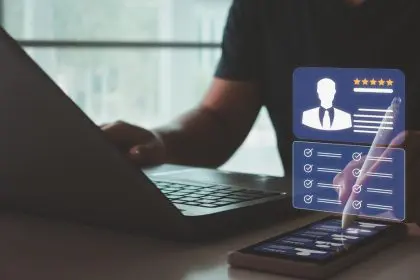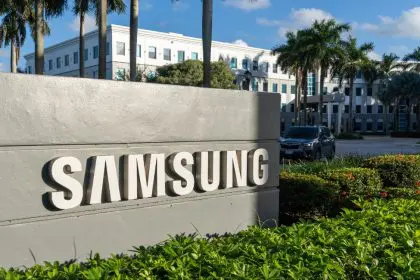Your computer has been acting strange lately — running slower than usual, showing weird pop-ups, or behaving in ways that make you suspicious something isn’t right. These could be signs that malware, spyware, or viruses have infected your system and are quietly wreaking havoc on your digital life.
Recognizing the warning signs early can help you take action before these malicious programs steal your personal information, damage your files, or completely compromise your computer’s security.
Your computer suddenly runs like molasses
One of the most obvious signs of infection is a dramatic slowdown in your computer’s performance. If your once-speedy machine now takes forever to start up, open programs, or complete simple tasks, malware could be consuming your system resources in the background.
Viruses and spyware often run multiple processes simultaneously, using up your CPU power and memory. This leaves fewer resources available for your legitimate programs, causing everything to crawl along at a frustrating pace.
The slowdown usually gets progressively worse over time as the malware spreads or downloads additional malicious components. What starts as slightly sluggish performance can eventually make your computer nearly unusable.
Pay attention to specific tasks that used to be quick, like opening your web browser or loading documents. If these basic functions now take significantly longer than usual, it’s time to investigate further.
Pop-ups and ads invade your screen
Legitimate websites do show ads, but if you’re suddenly bombarded with pop-ups, banner ads, or advertisements that appear even when you’re not browsing the web, you likely have adware or spyware infection.
These malicious programs generate revenue for cybercriminals by forcing ads on your screen, often for questionable products or services. The ads might appear as separate windows, overlay your current programs, or redirect your web browser to advertising sites.
Some infected computers display warning messages claiming your system is infected and offering to sell you fake antivirus software. These scareware tactics try to trick you into paying for useless programs or downloading even more malware.
If ads start appearing in unexpected places — like on your desktop, in system notifications, or within programs that normally don’t show advertisements — your computer is definitely infected.
Your web browser acts possessed
Browser hijacking is a common symptom of malware infection. Your homepage might change to an unfamiliar website, your default search engine switches without your permission, or you get redirected to random websites when trying to visit familiar sites.
New toolbars or browser extensions might appear that you never installed. These malicious add-ons often track your browsing habits, inject ads into web pages, or redirect your searches to generate revenue for attackers.
Your browser might also start running extremely slowly, crashing frequently, or displaying error messages. Some malware specifically targets web browsers because they contain valuable information like saved passwords, browsing history, and online banking details.
Mysterious network activity and data usage
Spyware and viruses often communicate with remote servers to steal your information or receive new instructions. This creates unusual network activity that you might notice if you monitor your internet usage.
Your internet connection might seem slower than usual, or you notice your data usage has increased significantly without any change in your online habits. Some malware downloads additional malicious files or uploads your personal information, consuming bandwidth in the process.
Task Manager or Activity Monitor might show network activity even when you’re not actively using the internet. Programs you don’t recognize could be sending and receiving data in the background.
Programs and files behave strangely
Infected computers often experience software malfunctions that seem random but are actually caused by malware interfering with normal system operations. Programs might crash unexpectedly, refuse to start, or display error messages.
Files might disappear, become corrupted, or show modification dates that don’t make sense. Some viruses specifically target certain file types, like documents or photos, either encrypting them for ransom or deleting them entirely.
Your computer might start or shut down at unusual times, or programs might launch automatically without your input. These behaviors indicate that malicious software is taking control of your system functions.
Security software gets disabled or blocked
Many viruses and malware programs specifically target antivirus software and other security tools to prevent detection and removal. If your antivirus program suddenly stops working, won’t update, or displays error messages, malware might be actively blocking it.
You might find that security settings have been changed without your knowledge, firewalls have been disabled, or you can’t access security-related websites. Some malware prevents users from downloading antivirus software or visiting cybersecurity company websites.
Windows Updates might fail to install, or you might receive messages that security features have been turned off. These are red flags that something is actively working to compromise your computer’s defenses.
Unusual system behavior and error messages
Infected computers often display strange error messages, blue screens of death, or system crashes that occur more frequently than normal. Your computer might freeze randomly, restart unexpectedly, or show warning messages about system problems.
You might notice new files or folders appearing in unexpected locations, desktop icons changing or disappearing, or system settings reverting to previous configurations without explanation.
The mouse cursor might move on its own, programs might open without your input, or you might hear unusual sounds from your computer. These symptoms suggest that malware is actively controlling your system.
Taking immediate action
If you recognize any of these warning signs, disconnect your computer from the internet immediately to prevent further data theft or system damage. This stops malware from communicating with remote servers or downloading additional malicious components.
Run a full system scan with updated antivirus software, or download a reputable anti-malware program if your current security software isn’t working. Tools like Malwarebytes, Windows Defender, or other trusted security programs can detect and remove many types of infections.
Consider backing up important files to an external drive before attempting removal, but scan them thoroughly before accessing them on a clean system.
Prevention beats detection
The best defense against spyware and viruses is preventing infection in the first place. Keep your operating system and software updated, use reputable antivirus protection, avoid suspicious email attachments and downloads, and be cautious about clicking links from unknown sources.
Regular system maintenance, including clearing temporary files and monitoring system performance, can help you spot problems early before they become serious security breaches that compromise your personal information or damage your computer permanently.


















